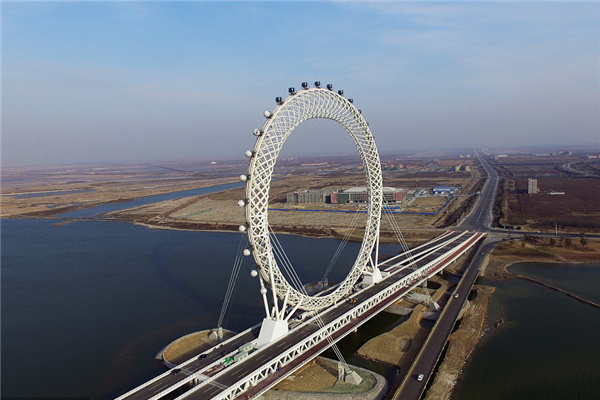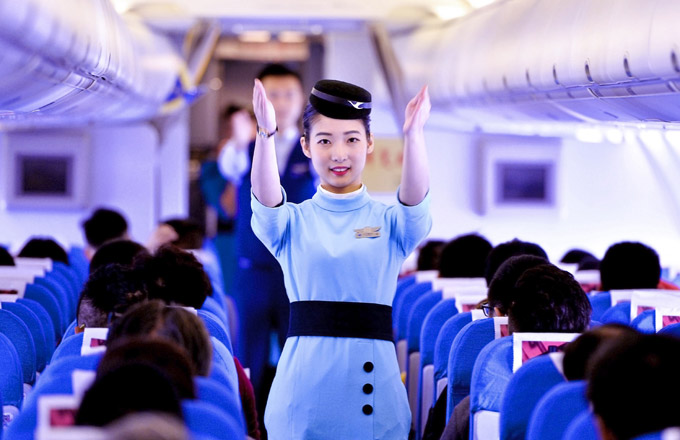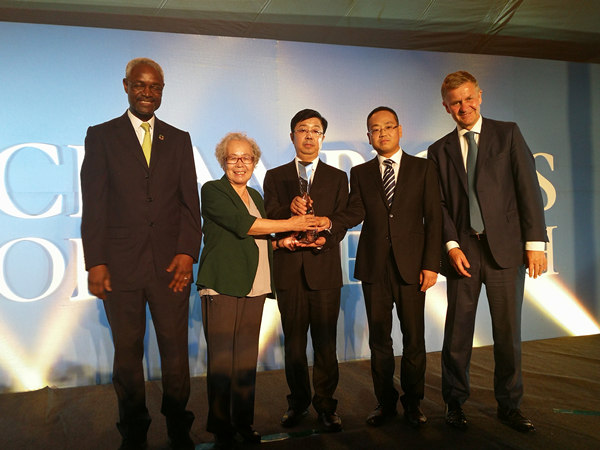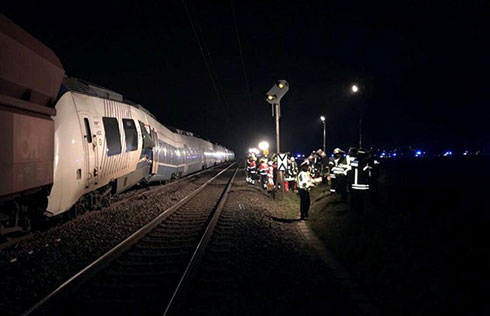

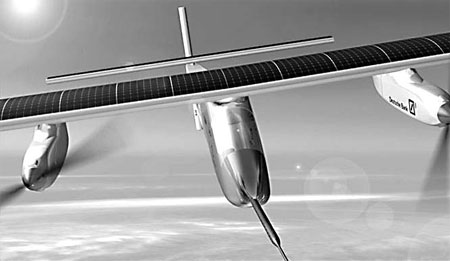
Singapore? India? Or China? Which country will be the only Asian stop for a solar-powered aircraft's round-the-world flight in 2011?
Solar Impulse, the company that launched the project, and the International Air Transport Association (IATA) recently presented the project to civil aviation authorities and aviation industry stakeholders in the three Asian countries.
The one-seat aircraft is expected to take off in 2011 and make a flight around the world near the equator, essentially in the northern hemisphere. Five stops are planned to change pilots. Each leg will last about five days. The flight will start in the United Arab Emirates (UAE), make stops in Asia, Hawaii, the United States, Europe, and finally return to the UAE.
"Our first choice is China," says Bertrand Piccard, president of Solar Impulse.
"China is a major economy of the world where a lot of exciting things are happening. China was also the first country to go around the world in a ship in 1420. We hope China could be part of this project to become one of the solar aircraft's five stopovers," says Piccard, who will be one of the two pilots to fly the aircraft.
Another reason to connect China with the project is the fact that the country is one of the world's fastest growing commercial aviation markets, Piccard says. China's air traffic has maintained an annual growth rate of 18 percent since 1980, almost three times the world's average air traffic growth rate during the same period, according to figures from the Civil Aviation Administration of China.
"The Chinese government has expressed a strong desire for environmental protection and has made a lot of efforts. We have the same vision," says Andre Borschberg, CEO of Solar Impulse.
Borschberg says the Chinese civil aviation authorities need to give the aircraft access to its airspace and allow it to land at one of its airports. The airport should also designate some space for the company to install a portable hangar to store the airplane overnight.
Solar Impulse will build two airplanes to complete the mission. The prototype aircraft will fly next spring in Switzerland to demonstrate the first 36-hour zero-fuel flight. The prototype will allow the engineers to optimize the design of the second airplane for the round-the-world flight.
In order to offer a maximum surface for solar cells, the first aircraft will have a 61-meter wingspan and the second airplane's wingspan will be about 80 meters, slightly wider than the wingspan of an Airbus A380.
The project will involve a total investment of $90 million. The three main partners of the projects are Solvay, Omega and Deutsche Bank. Currently all the partners are European companies and institutions.
"We want to make this a global project and also welcome partners from China and the United States," Piccard says.
IATA, an international trade body representing airlines operating 93 percent of scheduled global air traffic, is an institutional partner of Solar Impulse. It will provide support including assistance in obtaining air traffic control clearance.
"Solar Impulse and IATA share a vision. We are both looking toward a zero carbon emission future for air travel. Solar energy is one of the building blocks that will make this happen," says Giovanni Bisignani, IATA's director general and CEO.
"The Solar Impulse initiative is proof that with vision everything is possible-even carbon free flight," Bisignani says.
The international organization's target is to achieve a 25 percent improvement in fuel efficiency by 2020 compared to 2005. IATA also has a long-term "Green Vision" to see "zero emission" jets by 2050.
"In half a year's time, Solar Impulse will fly without any polluting emissions, but will carry only one person. To achieve IATA's vision, the world has a little more than 40 years left to find new technologies to increase the payload to a few hundred passengers," says Piccard.
The aviation industry's main emissions are carbon dioxide, water vapor and nitrogen oxide. Aviation is responsible for 2 percent of global carbon dioxide emissions, according to the United Nations Intergovernmental Panel on Climate Change. But since the aviation industry is growing at 5 percent annually, its carbon dioxide emissions may increase to 3 percent by 2050.
Global aircraft manufacturing giants Boeing and Airbus are also exploring alternative fuels that have a low-carbon-lifecycle footprint.
Boeing and Air New Zealand will jointly launch a biofuel flight on December 3 from Auckland using a B747-400 jetliner. Conducted in partnership with Rolls-Royce and UOP, a Honeywell company, one of the airplane's four Rolls-Royce engines will be powered in part using advanced generation biofuels derived from jatropha.
Boeing partnered with GE, Imperium Renewables and Virgin Atlantic in February to fly a B747-400 between London and Amsterdam using fuel derived from a mixture of Brazilian babassu nuts and coconuts.
European aircraft manufacturer Airbus debuted its onboard fuel cell activities on an A320 research aircraft in May.
Besides pushing the human being's limit in using renewable energy for flying, the Solar Impulse project is also trying to develop technologies that could be adopted in different fields, Borschberg says.
"A direct application is that we could use the high altitude platform, developed in the project, to replace satellites for flight communication," Borschberg says. "The human-machine interface technologies and construction techniques for building a lighter, but a stronger airplane could also be used in the automobile industry."
(China Daily 12/01/2008 page5)


